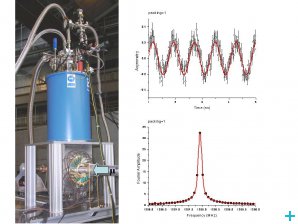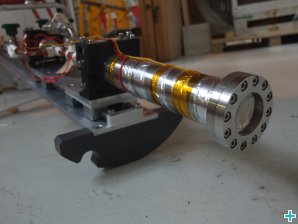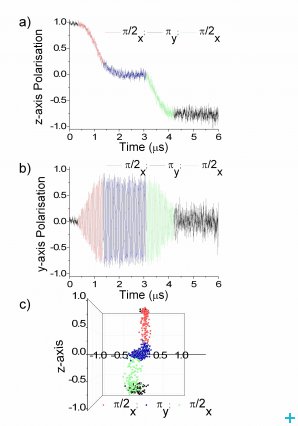Tasks
Task 20.2: Technologies for high field instruments
Summary:
Both ISIS and PSI muon facilities are developing new muon instruments designed to enable the application of magnetic fields in the range 5T – 10T. For muon spectrometers, where both incoming and outgoing particles are charged, fields in this range pose a very significant technical challenge as they strongly affect particle trajectories. Work is needed to develop suitable detector technologies and to design instrument detector arrays. It should be noted that the ISIS and PSI high field instruments will be largely complementary to each other, with ISIS concentrating on longitudinal µSR and PSI on transverse measurements.
Specific Aims:
- Development of fast-timing detectors for high transverse field applications. This work aims to produce a prototype positron/muon detector with less than 100ps time resolution.
- Design document for a 10T transverse field instrument for PSI, with particular reference to the design of the instrument detector array.
- Document describing the performance of the 5T longitudinal field spectrometer currently in development at ISIS.
Task 20. 3: Developing technologies for µSR at high pressures
Summary:
This work will focus on the development of pressure capabilities for µSR. In particular, the aim is to develop two types of pressure cells: a) for gas-phase studies and b) for condensed matter studies (e.g. novel electronic phenomena). The gas pressure cell will include an RF coil, making provision for RF studies akin to NMR, and opening up the possibility of studying reaction kinetics on topical gas systems. The challenge in this task will be solving problems unique to µSR, including the need for thin beam entry windows, avoiding significant degradation of the decay positrons and ensuring muons are stopped in the sample region with a low measurement background from the cell walls.
Specific Aims:
- Development of a solid-sample pressure cell for pressures beyond 2.5GPa, and designed for low measurement background. Spectra will be recorded to evaluate the performance and commission the cell.
- Development of a gas-phase µSR sample cell suitable for measurements in the ISIS 5T spectrometer. The cells will be designed for a working pressure of approximately 50bar and with an internal radio-frequency coil.
Task 20.4: Novel resonance techniques and simulation codes for complex experiments
Summary:
This development aims to demonstrate the use of NMR-style pulsed resonance techniques, and particularly simultaneous stimulation of the muon and nuclear spins, as a means of providing novel experimental methods for µSR. An in-situ NMR capability will also be developed, both to support the multi-nuclear experiments and to provide a unique experimental system. The suitability of simulation codes for supporting the analysis of complex µSR experiments will be considered. In particular, it is foreseen that a package will be coded for magnetic structure simulation applied to muons, involving the calculation of constrained electrostatic potentials for muon sites and dipolar sums.
Specific Aims:
- Demonstration of RF µSR experiments using NMR style pulsed techniques, including simultaneous stimulation of the muon and nuclear spins, e.g. RF decoupling and cross-polarisation.
- Development of in-situ NMR, with the aim of providing a working in-situ NMR apparatus.
- A study will be carried out to assess the suitability of simulation codes for supporting the analysis of complex µSR experiments. Existing codes will be considered, e.g. Quantum, and areas in which new codes might impact considered. In particular, the development of magnetic structure simulation for muons is foreseen, with a semi-standard implementation of magnetic structure in the cif protocol.
Task 20. 5: Muon beamline control and modelling
Summary:
Muon beamlines are complex and require many hours of set-up to enable correct transportation of the primary muon beam to the sample. The parameters of the beam can greatly affect measurement capabilities, and this is likely to become more significant when high magnetic field spectrometers come on-line (for example, the need to ensure the muon beam and magnetic field axes are co-linear becomes paramount). A greater understanding of beam and instrument properties, gained both through better diagnostic tools and simulation codes, will greatly assist beam setup, and aid the experimenter during subsequent data analysis.
Specific Aims:
- Development of techniques for beamline diagnostics, including an assessment of methods for providing diagnostic information, an evaluation as to elements of the beamline where diagnostic information will be of particular use. CCD camera for beam imaging in high magnetic fields.
- Extension of instrument simulation code to allow full instrument modelling, including the consideration of sample environment equipment.
- A detailed Nexus instrument definition file will be devised, suitable for both ISIS and PSI, which is suitable for capturing all instrument and beam parameters typically required for beam simulation.



